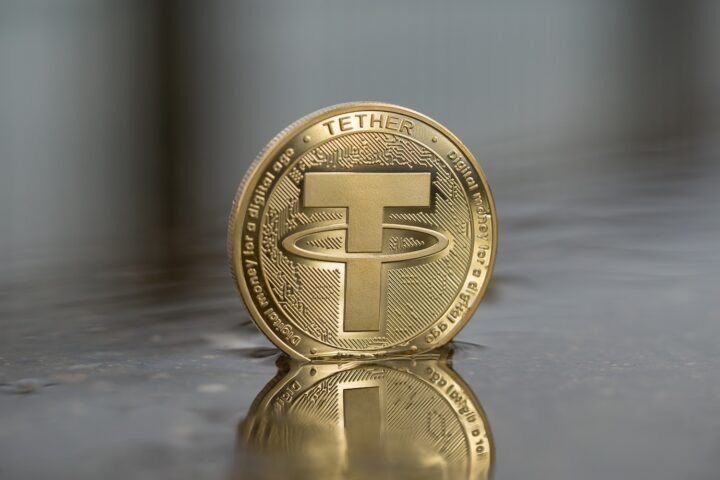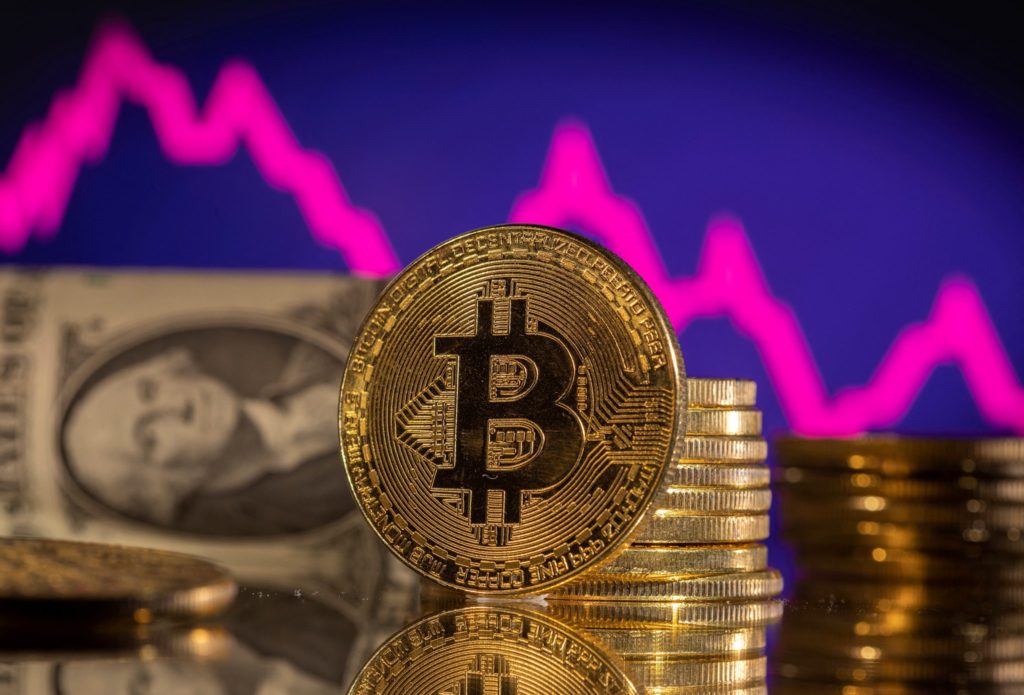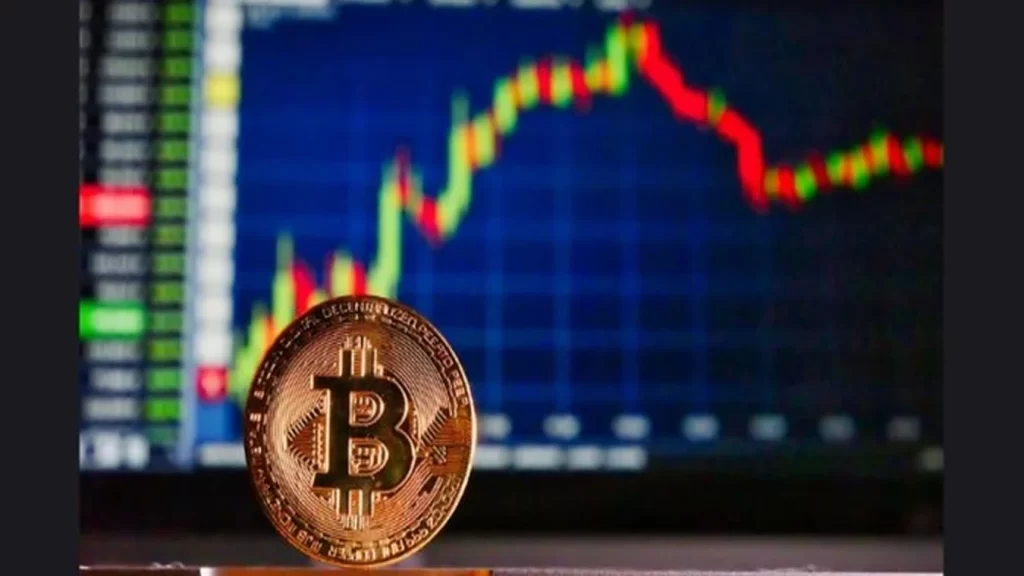Elon Musk, the prominent American business magnate, has recently launched an innovative company called “xAI” with a bold objective: to comprehend “the true nature of the universe.”
In an announcement made on July 12, xAI revealed its intention to collaborate closely with Twitter, Tesla, and other enterprises under Musk’s ownership to advance its mission.
The company is actively seeking experienced engineers and researchers in the San Francisco Bay area to join its technical team. Notably, Dan Hendrycks, the director of the Center for AI Safety, has been enlisted as an advisor to xAI.
The developers associated with xAI boast an impressive track record, having previously worked at esteemed institutions such as DeepMind, OpenAI, Google Research, Microsoft Research, Tesla, and the University of Toronto.
They have collectively made substantial contributions to the field, including the development of widely utilized methods like the Adam optimizer, Batch Normalization, Layer Normalization, and the discovery of adversarial examples.
READ MORE: President Xi Jinping Highlights CBDCs and Expansion of SCO
Moreover, the xAI team has played a pivotal role in groundbreaking projects such as AlphaStar, AlphaCode, Inception, Minerva, GPT-3.5, and GPT-4. To engage with the public and foster discussion, xAI has scheduled a Twitter Space chat for July 14.
In a previous report by Cointelegraph on April 17, it was revealed that Musk is also working on a competitor to ChatGPT called “TruthGPT.”
This large language model is being developed to explore the “mysteries of the universe.”
Musk claims that TruthGPT aims to counter the perceived “left-wing” bias prevalent in the industry, alleging that ChatGPT is programmed by experts who lean towards the left and, therefore, train the chatbots to deceive.
Musk has been vocal about the need for increased regulatory oversight of artificial intelligence (AI).
On July 6, he expressed concerns that AI technology may eventually surpass human intelligence in all domains.
He also emphasized the transformative impact of AI-powered devices such as autonomous cars and robots, stating that they will bring about profound changes in society.
With the launch of xAI and the ongoing development of TruthGPT, Elon Musk continues to make significant strides in the realms of artificial intelligence and technological innovation.
As these ventures progress, the industry eagerly anticipates the potential breakthroughs and advancements they may bring forth.
Suumit Shah, the founder of Dukaan, has faced criticism after announcing on Twitter that his company had replaced 90% of its support staff with an artificial intelligence (AI) chatbot.
Shah defended the decision, highlighting the improved response and resolution times for customer queries.
The tweet quickly sparked outrage online, particularly at a time when concerns about AI taking over jobs, particularly in the services industry, are already prevalent.
Shah’s series of tweets describing the company’s choice to implement a chatbot garnered over a million views.
Shah acknowledged that laying off staff had been a difficult decision but deemed it necessary given the state of the economy.
READ MORE: Bitcoin Attempts Fresh Breakout as Battle for Yearly Highs Intensifies
He emphasized that startups, including Dukaan, were prioritizing profitability over pursuing “unicorn” status.
The CEO explained that the firm had struggled with customer support for some time and saw the chatbot as a means to rectify the issue.
Highlighting the development process, Shah described how they rapidly built the AI platform and bot to provide every Dukaan customer with their own AI assistant.
He expressed pride in the bot’s ability to provide swift and accurate responses to a wide range of queries. Shah’s tweets also emphasized that the company was actively hiring for multiple roles.
However, many users criticized Shah’s tweets, accusing him of callously disrupting the lives of his staff with this decision. They expressed disappointment that Shah’s thread failed to mention the assistance provided to the laid-off employees.
While responding to the backlash, Shah dismissed the criticism, suggesting that people were in search of profitability rather than sympathy on Twitter.
He promised to address the issue of staff assistance on LinkedIn.
The incident reflects the growing prevalence and accessibility of generative AI tools like ChatGPT, which organizations employ to enhance productivity while reducing costs.
These advancements have sparked fear among workers about potential job losses to technology.
In fact, a report by Goldman Sachs in March indicated that AI could replace the equivalent of 300 million full-time jobs.
The investment in AI by various Indian firms has further raised concerns about potential job losses in the country.
The public backlash against Suumit Shah’s decision to replace support staff with an AI chatbot highlights the need for companies to carefully consider the human impact of such decisions and ensure that appropriate measures are in place to support affected employees.
Balancing technological advancements with ethical considerations and empathy remains a crucial aspect of managing the transition to an increasingly automated future.
The recent surge in filings for spot Bitcoin exchange-traded funds (ETFs) signifies a significant validation for Bitcoin, according to Michael Sonnenshein, the CEO of Grayscale Investments.
Sonnenshein, in an interview on CNBC’s Last Call, dismissed the idea that BlackRock’s entry into the Bitcoin ETF race diminished its appeal.
He emphasized that BlackRock’s involvement adds credibility to the asset class and demonstrates its longevity.
READ MORE: Arkham Introduces World’s First On-Chain Intelligence Exchange Amidst Huge Controversy
Over the past month alone, seven prominent institutional firms, including BlackRock, have submitted applications for spot Bitcoin ETFs in the United States.
If approved, these ETFs would offer both institutional and retail investors in the U.S. a straightforward and compliant avenue to gain exposure to Bitcoin’s price without actually owning the digital currency.
Sonnenshein highlighted the tried and tested nature of the ETF structure, which has facilitated access to various assets like commodities and stocks.
He emphasized that Bitcoin is an enduring asset that investors desire and deserve access to.
Previously, Grayscale provided U.S. investors with an indirect method of gaining exposure to Bitcoin through the Grayscale Bitcoin Trust (GBTC), which allowed trading of shares tied to large Bitcoin holdings.
However, the company intends to convert the GBTC into a spot Bitcoin ETF.
This transition would offer investors a more streamlined way to trade Bitcoin’s price, eliminating the discount to net asset value associated with GBTC.
Sonnenshein described the move to an ETF structure as a crucial development, providing investors with the additional safeguards they seek.
In June 2022, Grayscale filed a lawsuit against the United States Securities and Exchange Commission (SEC) after the rejection of its 2021 application to convert GBTC into an ETF.
Sonnenshein stated that a successful outcome in this legal challenge would unlock billions of dollars in investor capital.
Following BlackRock’s filing for a spot Bitcoin ETF on June 15, the price of Bitcoin surged by over 20%, reaching a year-high of $31,460 on July 6. As of now, it is trading at $30,633.
These developments indicate a growing interest in Bitcoin from institutional players and the potential for increased mainstream adoption through the introduction of regulated ETFs.
Overall, the flood of spot Bitcoin ETF filings represents a moment of validation for Bitcoin as a legitimate asset class, with the potential to broaden its accessibility to investors while providing additional protection and market opportunities.
On July 11, the United States Senate Financial Services Committee Chair Ron Wyden and ranking member Mike Crapo reached out to the digital asset community through an open letter, seeking input on the taxation of digital assets.
Recognizing the highly complex nature of this issue, the senators provided background reading from the Joint Committee on Taxation to assist respondents in formulating their answers.
The senators acknowledged that the Internal Revenue Code of 1986 does not offer a straightforward classification for digital assets.
As a result, they posed a series of questions covering nine subject areas to gain a deeper understanding of the challenges surrounding the taxation of digital assets.
READ MORE: Chinese Government Tightens Regulations on AI Development
They explained that the Committee on Finance had initiated a bipartisan effort to identify key questions at the intersection of digital assets and tax law.
The letter explored various topics, including fair value (mark-to-market) accounting, the trading safe harbor to encourage foreign investment, digital asset loans, wash sales, constructive sales (related to short-selling), income from staking and mining, “nonfunctional currency,” reporting by foreign firms, and valuation and substantiation on an exchange.
Throughout the letter, specific sections of the tax code were referenced to provide context for the questions.
While the Internal Revenue Service (IRS) has primarily focused on combating criminal activities related to cryptocurrencies, it has also begun taking a more proactive approach to income taxation.
Earlier this year, the IRS proudly announced that it had seized a total of $10 billion in crypto as part of its law enforcement efforts.
In a recent case, the IRS demonstrated its increased emphasis on income taxation by issuing a summons to the crypto exchange Kraken in 2021.
The summons demanded user information on all transactions exceeding $20,000. On June 30, the District Court for the Northern District of California ordered Kraken to comply with the IRS’s request.
Interested parties have until September 8 to respond to the Senate committee’s letter, providing their insights and perspectives on the taxation of digital assets.
This outreach demonstrates the senators’ commitment to understanding the complexities involved and seeking input from the digital asset community to shape future tax policies.
The recent criticism faced by Arkham, the startup behind the blockchain intelligence platform, revolves around its new platform called “Intel Exchange.”
The platform rewards users with its ARKM token for identifying anonymous blockchain addresses, with the goal of unmasking scammers and hackers in the cryptocurrency space.
However, it has been branded as a “snitch-to-earn” system by critics on Crypto Twitter.
READ MORE: Arkham Introduces World’s First On-Chain Intelligence Exchange Amidst Huge Controversy
In response to the backlash, Miguel Morel, the CEO of Arkham, defended the platform during a Twitter Space session held on July 11.
Morel clarified that the platform is not intended to be a completely unrestricted marketplace and emphasized that there are restrictions and guidelines in place.
He highlighted the inadequacy of publicly available blockchains in maintaining the confidentiality of private information, emphasizing that Arkham would retain control of the data.
According to Morel, the primary aim of Arkham’s Intel Exchange is to reveal the identities of trading firms, market makers, large institutions, and exchanges.
He argued that these entities often benefit from having knowledge of who is buying and selling large positions of specific tokens.
To address concerns about potential abuse and false accusations, Morel assured listeners that the platform would be carefully regulated.
He stated that every bounty would need to be approved, making it more regulated than social media platforms like Twitter or Facebook.
However, TV host Ran Neuner expressed reservations, particularly regarding Arkham’s management of user data.
This concern comes in the wake of a recent controversy involving Arkham’s weblink referrals program, which inadvertently exposed user emails through identifiable strings of characters in referral links, revealing the referring email address.
This incident has raised further questions about the company’s data management practices and data security.
Overall, Arkham’s CEO Miguel Morel has dismissed the accusations of the Intel Exchange platform being a “snitch-to-earn” system, emphasizing its purpose of unmasking scammers and providing transparency in the cryptocurrency space.
Nevertheless, concerns regarding data management and security have added to the criticism and scrutiny faced by the startup.
The European Commission has predicted that “extended reality” (XR) technology, which allows users to engage with virtual worlds, could generate up to 860,000 jobs in Europe by 2025.
XR encompasses virtual reality, augmented reality, and mixed reality, and is considered a key facilitator of virtual worlds, according to the Commission’s statement on July 11.
The Commission emphasized the significant impact on employment that XR is expected to have, with an additional 1.2 million to 2.4 million jobs created either directly or indirectly in various sectors by 2025.
However, it also noted that the majority of innovation in the metaverse is currently concentrated in the United States, China, and South Korea.
READ MORE: President Xi Jinping Advocates for CBDC Expansion
Unlike these countries, the EU lacks tech giants that can spearhead investments in virtual world development in the coming decade.
Although Europe’s AR/VR market primarily focuses on gaming, media, and entertainment, there is ample potential for its expansion into other areas such as retail, healthcare, military and defense, and manufacturing.
The Commission further highlighted that XR-powered virtual worlds represent a fundamental component of the “next generation” of the internet, known as Web 4.0.
In this evolution, physical and digital objects converge in real-time within virtual environments.
The potential of virtual worlds to revolutionize people’s daily lives and create diverse opportunities across business and industrial ecosystems is a key driver behind the transition to Web 4.0.
Several examples were provided to illustrate the breadth of possibilities offered by virtual worlds, including training surgeons for complex procedures, preserving cultural heritage buildings using “digital twins,” and utilizing 3D models to address global warming.
In a working document presented to the European Parliament, the Commission outlined its plan to position itself as a global leader in Web 4.0 and the metaverse.
Thierry Breton, the European Commissioner for Internal Market, expressed Europe’s ambition to become a frontrunner in these domains.
The Commission proposed ten actions to achieve this objective, including attracting specialized talent in virtual world development, establishing regulatory sandboxes for testing innovative ideas, and formulating global standards for interoperable metaverses.
Europe possesses the necessary elements to lead this technological transition, including innovative start-ups, a wealth of creative content and industrial applications, a strong role in setting global standards, and an innovation-friendly and predictable legal framework, Breton added.
In conclusion, the European Commission is actively positioning Europe to capitalize on the potential of XR and virtual worlds, aiming to foster job creation, drive technological advancements, and establish itself as a world leader in Web 4.0.
Cboe Global Markets, a prominent exchange operator, has made significant changes to five spot Bitcoin Exchange-Traded Fund (ETF) applications by including a surveillance-sharing agreement (SSA) with Coinbase.
Invesco, VanEck, WisdomTree, Fidelity, and the joint fund by ARK Invest and 21Shares are among the ETFs that had their filings amended with the United States Securities and Exchange Commission (SEC) on July 11.
Cboe confirmed that it had recently reached an agreement with Coinbase regarding the terms of the SSA, which was finalized on June 21.
The initial filings for the ETFs had indicated that the parties were anticipating entering into an SSA prior to potentially offering the ETFs.
READ MORE: Bitcoin Attempts Fresh Breakout as Battle for Yearly Highs Intensifies
The inclusion of SSAs in the filings is an attempt to meet the SEC’s requirements, which aim to prevent fraudulent conduct and safeguard investors.
The regulator outlined these standards on March 10, emphasizing the need for a comprehensive surveillance-sharing agreement with a regulated market that deals with significant amounts of the underlying or reference bitcoin assets.
Spot Bitcoin ETF applications have been a significant focal point for the industry in recent times.
Fidelity, Invesco, WisdomTree, and Valkyrie have all submitted filings, following the footsteps of BlackRock, a $10 trillion asset management firm, which also filed an ETF for SEC approval.
Additionally, on June 29, the U.S. stock exchange Nasdaq resubmitted its application to list BlackRock’s ETF, also incorporating an SSA with Coinbase.
The amended filings made by Cboe had a positive impact on the share price of Coinbase (COIN), with a nearly 10% increase observed on June 11.
This surge took Coinbase’s shares to their highest value since August 16, as reported by Google Finance.
However, despite its involvement in Bitcoin ETF applications, Coinbase is currently engaged in a legal dispute with the SEC.
The regulatory body has accused Coinbase of offering cryptocurrencies that it deems to be unregistered securities, leading to a lawsuit between the two parties.
In conclusion, Cboe Global Markets’ decision to amend the spot Bitcoin ETF applications to include a surveillance-sharing agreement with Coinbase reflects the industry’s efforts to comply with SEC standards.
This development has generated positive market sentiment, as demonstrated by the increase in Coinbase’s share price.
Nonetheless, Coinbase faces legal challenges from the SEC regarding the alleged offering of unregistered securities.
Space and Time, a blockchain indexing startup, has announced a new feature it calls Prompt-to-SQL, which allows its users to perform blockchain data analysis without any formal knowledge of the SQL language, all thanks to an AI chatbot.
SQL, short for Structured Query Language, is an industry-standard domain-specific language for interacting with databases. It’s a powerful way for programmers to express how they want to read or change the data inside many types of database architectures. Because of its relative complexity, data analysts must be proficient in the language to perform their job well.
Less technical people who want to create unique visualizations or analysis will often be unable to work with the databases directly, relying on other people or fairly limited visual tools. Space and Time, which specializes in providing advanced historical and current blockchain data, saw AI as the solution to this natural friction in its product.
The company has now built the OpenAI-based Houston chatbot, which specializes in translating natural language into well-made SQL requests that can be used to interact with Space and Time data troves. The bot is accessed through the Space and Time Studio interface, which offers a full kit to create data pipelines, dashboards and ML/AI models.
“AI-powered SQL is a game-changer for businesses that run a lean analytics team,” said Scott Dykstra, CTO and Co-Founder of Space and Time. He explained that Houston makes it possible to “generate SQL or Python scripts from prompts, ask natural-language questions about data and get back an accurate visualization of the answer, and load in new datasets.”
“Whether the focus is indexed blockchain data or off-chain data from your business, discovering, querying and building on that data is just a few prompts away,” Dykstra concluded.
AI has been tremendously promising in popular perception after the release of OpenAI’s ChatGPT. And though some believe it won’t be at least a few decades until AI is able to replace programmers, most agree that it is a valuable tool for small or repetitive tasks.
SQL queries are a good example of a fairly straightforward operation that often just requires knowing the language itself. AI can be extremely helpful to programmers and non-programmers alike, either augmenting their existing capabilities or providing basic capabilities in a pinch.
The Houston bot has been built in partnership with ChainML, a startup helping Web3 companies integrate AI. Though its models are based on OpenAI technology, they are not just “ChatGPT wrappers” like some other popular AI integrations in crypto.
“We are excited to enable Houston with our open-source framework for building applications using AI agents that provides intent detection,” said Ron Bodkin, CEO and Founder of ChainML.
Space and Time is a blockchain startup backed by Microsoft’s venture arm M12. It offers data indexing for most popular blockchains such as Ethereum, Polygon, BNB, Sui, with verification offered by its custom Proof-of-SQL zero knowledge proof scheme.
Other Stories:
Dubai Cryptocurrency Regulator Suspends BitOasis’ License for Failure to Meet Mandated Conditions
Crypto Investment Firm Paradigm Criticizes SEC for Pursuing Bittrex
Ethereum Co-Founder Vitalik Buterin Calls for Scalable Solutions to Transform Bitcoin
The forthcoming Bitcoin halving event is expected to bring a new wave of momentum to Bitcoin-focused stocks, particularly MicroStrategy, the technology firm founded by Michael Saylor.
Berenberg Capital Markets, a New York-based investment firm, has expressed its optimistic outlook on MicroStrategy in a research note shared with Cointelegraph, setting a price target of $430 for the company.
Berenberg analysts believe that the majority of MicroStrategy’s value lies in the 152,333 Bitcoin it currently holds.
They suggest that a Bitcoin halving rally could result in a significant increase in the price of MicroStrategy shares.
READ MORE: Hacker Exploits Code Vulnerability, Drains $455,000 from Arcadia Finance
The Bitcoin halving, scheduled for April 26, 2024, reduces the issuance rate of BTC by 50%, thereby slowing down the rate at which new Bitcoin enters the crypto market.
The research note states that based on historical patterns, Bitcoin’s price tends to rally before and after each halving event.
The analysts predict that the pre-halving rally for the fourth halving could begin around four months from now.
Previous halving cycles have seen Bitcoin’s price surge by at least 682%. For instance, during the first halving on November 28, 2012, Bitcoin was valued at around $12, but 367 days later, it reached a peak of $1,164.
While Bitcoin’s supply follows a predetermined path, gauging the overall demand for Bitcoin is crucial in predicting the potential magnitude of a future rally.
To assess this, the research note points to the recent surge in spot Bitcoin ETF applications from major asset managers, indicating an increasing institutional adoption of Bitcoin.
Additionally, the note highlights the pro-Bitcoin statements made by BlackRock CEO Larry Fink on July 5, suggesting growing conviction in Bitcoin.
The research report was authored by equity analyst Mark Palmer, along with associates Matthew Laflash and Hassan Saleem.
Currently, MicroStrategy shares are trading at $408, marking a nearly 180% gain since the beginning of 2023. Meanwhile, the price of Bitcoin has risen by 84% since the start of the year.
As a reminder of this significant moment in history and as a show of support for independent journalism in the crypto space, readers are encouraged to collect this article as an NFT (Non-Fungible Token).
Despite monumental progress in the past few years, the most popular smart contract blockchains remain limited in their scalability prowess. New blockchains like Solana and Sui have been somewhat of a disappointment, while developers are looking for better frameworks than Solidity and the EVM.
In this environment, a new chain provides a completely new architecture for smart contract scalability: Vara. It wants to bring modern asynchronous computing to smart contracts, a first in the industry.
The traditional blockchain machine is sequential: each transaction is expected to be executed one after the other. You can’t create transactions that wait for some process to finish, so either it all gets executed in its spot in the queue, or it gets rejected (or reverted) outright.
This model applies both to Bitcoin and to the Ethereum Virtual Machine (EVM), which have been some of the earliest blockchain designs out there. With some dubbing Ethereum as the “world computer,” over time people came to realize that it’s an incredibly inefficient one.
Since all nodes in the world execute the same sequential tasks, the performance of the EVM is laughable for modern computing standards. Ever since the early days of blockchain, the tech community’s goal has been to introduce parallel processing to the transactions, so that not every single computer is doing the exact same thing.
Ethereum’s roadmap is to scale by making, in a nutshell, more of these sequential blockchains using the EVM as their core. But other projects decided to tackle the core virtual machine architecture, notably Solana, Sui and Aptos.
The goal for these projects is to ensure that, even if the exact same blockchain is replicated in all machines, at least it runs as fast as the machine itself.
Vara, a blockchain powered by the Gear Protocol, goes even further by adding fully asynchronous, multi-threaded transactions, which should provide developers much higher performance and flexibility.
Actor-based Processing Enables Modern Async-Await Programming
The key ingredient in Vara is a system that the team calls Actor Model, where an Actor can be a smart contract program, or a user’s wallet. Each Actor is an island of its own memory, which makes the blockchain much more efficient: each transaction can only modify the memory of the Actors it targets, while a global state system like the EVM has to keep literally every single contract in memory.
Actors communicate with each other by passing messages, which the recipient is free to accept, disregard or process later. This is a feature suited for secure parallel processing, as multiple Actors can send messages to another, but the target Actor will only process the messages one at a time.
This asynchronous processing is available in Vara code through the Async-Await pattern, a modern web programming technique, which enables a huge amount of flexibility to developers, especially when it comes to off-chain interactions with oracles.
Requesting information from the Web is an inherently uncertain operation: it takes a long time (by CPU standards), it could fail, or it could freeze. Asynchronous programming is designed to deal with this issue, as you can just send the request, do other things, and collect the results when (or if) they arrive.
Because blockchains are usually sequential, directly querying data is out of the question, so most projects rely on external and comparatively centralized providers like Chainlink. With Vara, oracles can be native to the blockchain’s code, which would make projects as decentralized as the chain itself.
Can Vara Stand Out Amongst The Competition?
From a technological perspective, Vara is similar to Solana and Sui, and to a lesser extent to Aptos, all of which are new blockchain networks that came after Ethereum. The Asynchronous model in Vara is more flexible for developers, for example enabling operations that span multiple blocks.
From a perspective of attracting developer talent, Vara has an edge over Aptos and Sui. Its smart contracts are based on WebAssembly, which focuses on Rust, a popular language used extensively in Web2 and Web3. While Aptos and Sui use Move, a novel language where few people have development expertise (and even fewer have good auditing experience).
Gear Protocol and Vara have been founded by Nikolay Volf, a core engineer at Parity who helped make Polkadot possible. The project is an active part of the large Polkadot community, and its founder Gavin Wood invested in the project. This gives it a good initial fit as it can attract its first developers and users from a well-established community, though Vara will be a stand-alone blockchain at first.
The market for alternative layer-1 networks has retreated in the past few months, as all the hype moved to the Ethereum layer-2 networks. Tokens like SOL, APT and SUI have fairly small capitalizations, and combined they have much less value locked in DeFi than just Optimism, the second largest layer-2.
But the woes of others may become an opportunity for Vara: its similarity to Solana may help attract its developer talent, now that the chain has been badly damaged by the FTX fallout.
Vara has solid tech fundamentals, a consistent and well-made developer onboarding program, as well as the support of a passionate community. With the bear market, these factors start to outweigh flashy liquidity mining programs and massive capital allocations, as evidenced by SUI’s rocky start.
Though it’s difficult to make predictions, at the very least Vara has all the ingredients to become a dark horse in the race for the most successful blockchain network.












